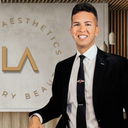I am 47 and am getting a vertical wrinkle in my eyelids (from the brow area to lid). Is botox an appropriate corrective measure for this or is surgery required to correct?
Answers (18)
From board-certified doctors and trusted medical professionals
Dr. Ron Shelton, MD

Dr. Ron Shelton, MD
Dermatologic Surgeon, Board Certified in Dermatology
Answer
Dr. Daniel Levy, MD

Dr. Daniel Levy, MD
Dermatologic Surgeon, Board Certified in Dermatology
Answer
Dr. Harold J. Kaplan, MD

Dr. Harold J. Kaplan, MD
Board Certified Facial Plastic Surgeon
Answer
Dr. Toby Mayer, MD

Dr. Toby Mayer, MD
Board Certified Facial Plastic Surgeon
Answer
Dr. Tom J. Pousti, MD
Dr. Tom J. Pousti, MD
Board Certified Plastic Surgeon
Answer
Dr. Joseph A. Eviatar, MD, FACS
Dr. Joseph A. Eviatar, MD, FACS
Oculoplastic Surgeon, Board Certified in Ophthalmology
Answer
Dr. Vish Banthia, MD
Dr. Vish Banthia, MD
Board Certified Facial Plastic Surgeon
Answer
Dr. Peter A. Aldea, MD
Dr. Peter A. Aldea, MD
Board Certified Plastic Surgeon
Answer
Dr. Daniel Berg, MD
Dr. Daniel Berg, MD
Dermatologic Surgeon, Board Certified in Dermatology
Answer
Answered on Feb 24, 2011
Answer
More Botox Questions
See all Botox Q&AWE SEND PRETTY
EMAILS
What’s trending? Who’s turning heads? Which TikTok myths need busting? We’ve got you. No fluff, no gatekeeping—just real talk. Get our free, unfiltered newsletter.